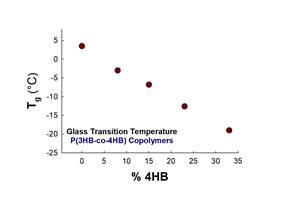A Blueprint for Recovery in Manufacturing?
Manufacturing needs people to run the machines needed to make parts. Here are some idea to help make that happen.
his past July, the Advanced Manufacturing Partnership (AMP) Steering Committee of the President’s Council of Advisors on Science and Technology (PCAST) issued a report on Capturing Domestic Competitive Advantage in Advanced Manufacturing. I thought it would be useful to cover some of the more salient points in the report, since it covers some issues that likely keep you up at night.
Rightfully, the AMP Steering Committee concludes that “the nation’s historic leadership in advanced manufacturing is at risk. The threat to our advanced manufacturing sector places our economy as a whole at risk, jeopardizes our international trade, and, above all, undermines the innovation that our nation needs to thrive in the future.”
What to do about this? AMP has some specific ideas: 1) enabling innovation, 2) securing the talent pipeline, and 3) improving the business climate. The latter includes a call to establish a national network of manufacturing innovation institutes; an emphasis on investment in community college training of the advanced manufacturing workforce; an approach to evaluate platform manufacturing technologies for collaborative investment; a plan to reinvigorate the image of manufacturing in America; and proposals for trade, tax, regulatory, and energy policies that would level the global playing field for domestic manufacturers.
I found the AMP’s recommendation on “the talent pipeline” to be particularly compelling, given the huge number of jobs that remain unfilled in manufacturing (10 million worldwide, according to a report issued this past spring by the World Economic Forum with Deloitte Touche Tohmatsu Ltd., and more than 500,000 in the U.S., according to multiple reports). The importance of finding people to fill these positions cannot be overstated. We’ve all read about the prospects for “reshoring”—bringing manufacturing jobs that had been outsourced back to the U.S. One question is how long these “reshored” jobs will remain in U.S. if plastics processors and other manufacturers can’t find the engineering talent needed to ensure that OEMs get their parts.
Here is what AMP had to say on the subject of talent:
1. Correct public misconceptions about manufacturing: Building excitement and interest in careers in manufacturing is a critical national need, and an advertising campaign is recommended by the AMP Steering Committee as one important step in this direction.
2. Tap the talent pool of returning veterans: Returning military veterans possess many of the key skills needed to fill the gap in the manufacturing talent pipeline. The AMP Steering Committee makes specific recommendations on how to connect these veterans with manufacturing employment opportunities.
3. Invest in community-college-level education: The community college level of education is the “sweet spot” for reducing the skills gap in manufacturing. Increased investment in this sector is recommended, following the best practices of leading innovators. (Are you old enough to remember “shop” classes in high school?)
4. Develop partnerships to provide skills certification and accreditation: Portability and modularity of the credentialing process in advanced manufacturing is critical to allow coordinated action of organizations that feed the talent pipeline. The AMP Steering Committee supports the establishment of “stackable” credentials.
5. Enhance advanced manufacturing university programs: The AMP Steering Committee recommends that universities bring new focus to advanced manufacturing through development of educational modules and courses.
The entire report includes recommendations beyond employment. Do an internet search on Capturing Domestic Competitive Advantage in Advanced Manufacturing to download the whole PDF document.
It’s been manufacturing that has pulled us out of the Great Recession, but a lot more needs to be done. I think you’ll agree that this report is extremely comprehensive and establishes a good foundation on what we need to do to get where we want and need to be. Of course, words in a report are only as good as the willingness to execute them.
Let’s hope someone’s listening.
Related Content
How to Extrusion Blow Mold PHA/PLA Blends
You need to pay attention to the inherent characteristics of biopolymers PHA/PLA materials when setting process parameters to realize better and more consistent outcomes.
Read MoreFilm Extrusion: Boost Mechanical Properties and Rate of Composting by Blending Amorphous PHA into PLA
A unique amorphous PHA has been shown to enhance the mechanical performance and accelerate the biodegradation of other compostable polymers PLA in blown film.
Read MoreHow to Optimize Injection Molding of PHA and PHA/PLA Blends
Here are processing guidelines aimed at both getting the PHA resin into the process without degrading it, and reducing residence time at melt temperatures.
Read MoreFoam-Core Multilayer Blow Molding: How It’s Done
Learn here how to take advantage of new lightweighting and recycle utilization opportunities in consumer packaging, thanks to a collaboration of leaders in microcellular foaming and multilayer head design.
Read MoreRead Next
How Polymer Melts in Single-Screw Extruders
Understanding how polymer melts in a single-screw extruder could help you optimize your screw design to eliminate defect-causing solid polymer fragments.
Read MoreUnderstanding Melting in Single-Screw Extruders
You can better visualize the melting process by “flipping” the observation point so that the barrel appears to be turning clockwise around a stationary screw.
Read More (2).jpg;maxWidth=970;quality=90)



 (2).jpg;maxWidth=300;quality=90)






 (1).jpg;maxWidth=970;quality=90)